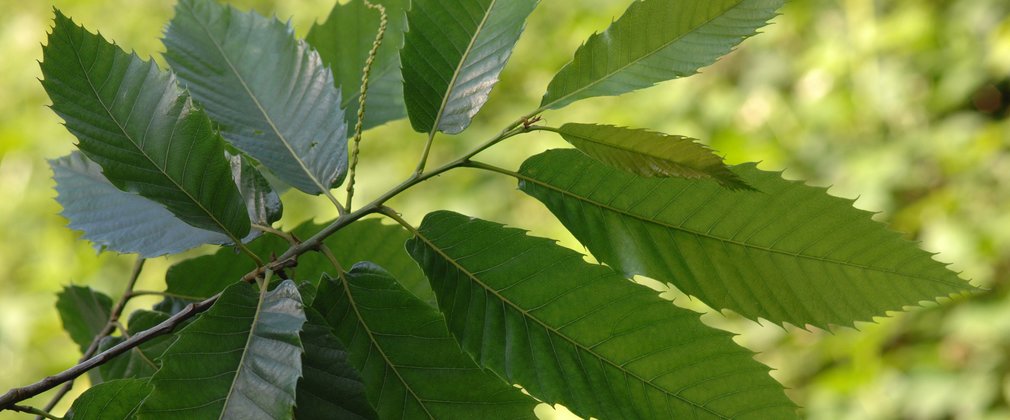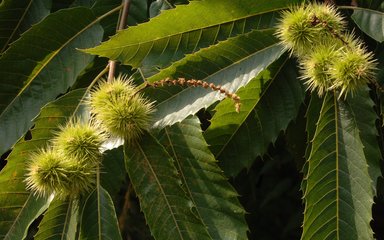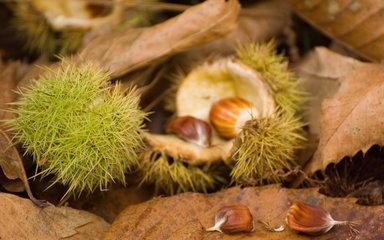
The sweet chestnut was introduced into England from southern Europe by the Romans. It's now widespread on lighter soils in southern parts of the country, where it has become an important coppice species. Find out more about this tree and how to spot it when you're out and about.
Sweet chestnut facts and figures
- sweet chestnut (Castanea sativa) broadens with age and can grow up to 40 metres.
- the tree begins to bear fruit around 25 years old.
- roasted sweet chestnuts are delicious but most have to be imported as the British climate is too cold for them to ripen properly.
- the flowers from sweet chestnuts are an important source of nectar and pollen for bees and insects.

Sweet chestnut identification tips
Heading out into the forest? Here are some top things to look out for to help you spot sweet chestnut:
- bark: smooth and grey-purple in colour with long, diagonal fissures.
- catkins: some have both male and female flowers on the same stalk. The remains of the male catkin stay attached to the husk until it falls.
- leaves: long, glossy green leaves with pointed tips and serrated edges. They turn golden during the autumn, before falling.
- flowers: after pollination the female flowers turn into shiny, red-brown nuts contained in a spiky case. The nuts of sweet chestnuts are smaller than those of the horse chestnut and are found in clusters.
How sweet chestnut is used
The durable yellow-brown timber is strong and good for joinery and cabinet making, coffin boards and roof beams. In the past it was often used for pit props in the mining industry and poles for growing hop vines.
Sweet chestnut can be coppiced and grows well from cut stumps, producing long, straight limbs that have many uses including fencing, fuel and charcoal.
Their nuts are edible to humans and can be eaten raw, roasted or ground into a flour.

Did you know? Some people believe the Romans introduced the sweet chestnut into Britain because of their love for polenta made from chestnut flour.
Sweet chestnut and future forestry
One of the fastest growing broadleaves, with durable timber, sweet chestnut will continue to planted. However, it can be susceptible to pests and diseases.
The species is likely to benefit from a warming climate, because of its origins in southern Europe, and likely to expand its range in Britain so may be planted further north in future.

